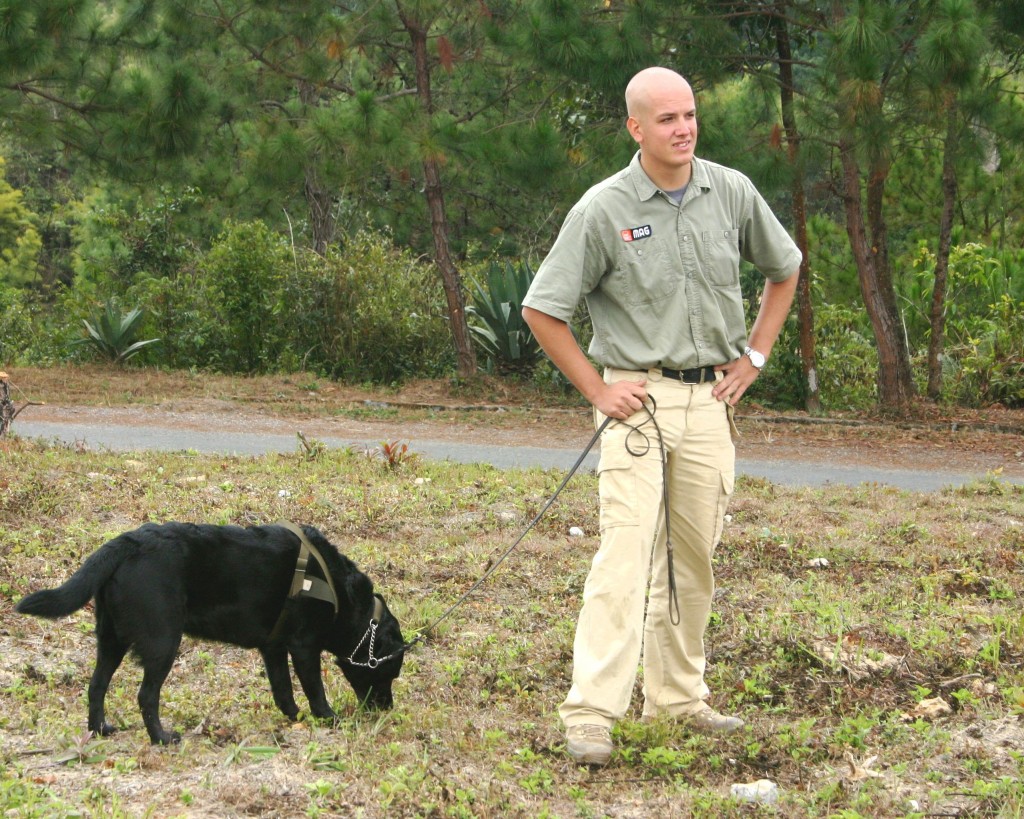Project Sekong 2013: Bomb sniffing dogs may return to Laos for another trial
There’s talk of bringing bomb detection dogs back to Laos. About ten years ago MAG, the Mines Advisory Group, brought two dogs from Sweden for trials. The dogs worked well with their Swedish handlers, but were an expensive addition to MAG clearance efforts and there was doubt, in the end, about whether the dogs’ contribution equaled the cost of breeding, training, and maintaining them.
(One of the two dogs was not particularly nice to be around. I may be alone in that opinion, although it’s likely that the Swiss tourist who lost the end of his nose to that dog would agree with me. On the other hand, if sociability were a job requirement for us humans, many UXO clearance teams would be severely understaffed).
Dogs offer a singular advantage over humans sweeping the earth with metal detectors. The detectors, even when adjusted to exacting levels of sensitivity, will indicate the presence of many pieces of metal that are not, in fact, ordnance and each of those false alarms must be explored. In heavily bombed areas deminers may excavate hundreds or even thousands of pieces of “frag” for every bomblet found.
Since dogs search for the scent of explosive, not metal, they trot right over frag and go straight to ordnance, sparing the deminers who follow along the effort of digging out all the bits and bobs. (Other critters have also been used to detect explosives; rats and wasps have received the most publicity).
Weather conditions, even time of day, affect the presence of scent so an animal’s ability is somewhat variable. Different dogs must check each other’s work and humans with detectors must conduct “quality assurance” inspections on a significant portion of the land before a parcel can be declared safe.
The Swedish dogs were the product of a special breeding program, sons and grandsons of bomb detecting dogs, and underwent lengthy training programs and apprenticeships. They were matched to specific handlers and couldn’t be tasked to work with a rotating crew of deminers. By the time the dogs arrived from Sweden tens of thousands of dollars had been invested in each of them. The loss of a dog to accident or illness would mean a tough financial hit to a program already struggling for adequate funding.
The heat and humidity in Laos was hard on the Swedish dogs; one died shortly after returning to Scandinavia, from a condition possibly exacerbated by the stress of life here. In neighboring Cambodia, where dogs have been employed in minefield clearance, no dogs have been lost to accidents with ordnance but there have been dog fatalities due to snakebite; sadly, snakebite is a fate that will likely occur in Laos from time to time, if dogs are used extensively here.


Hello Jim,how are you? I am Phan. We met at the market. You bought a mosquito net. Do you remember me?